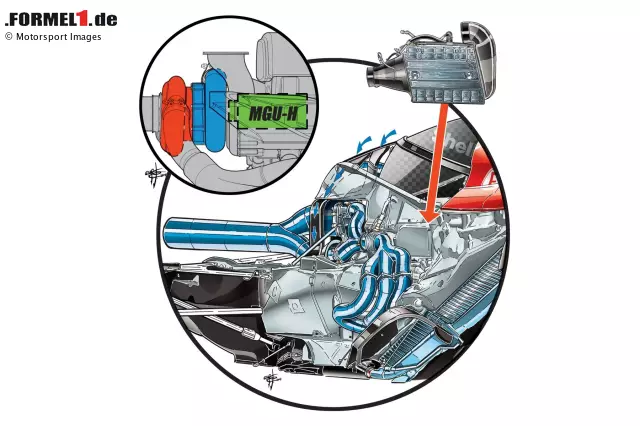FIA explains: Why there will be no new 2014 dominance in 2026

(Motorsport-Total.com) - The International Automobile Federation (FIA) does not expect any one engine manufacturer to dominate under the new technical regulations in 2026. Nikolas Tombazis, FIA's head of single-seater racing, emphasized this in an interview with Motorsport-Total.com .
He said: "We would have liked to simplify the engines even further, but they are still simpler than the current generation of engines . Because the MGU-H is being eliminated and there are stricter limits, we don't think the gaps will be as large as they were in 2014."
With the introduction of the turbo-hybrid regulations with 1.6-liter engines, Mercedes had gained a technical advantage that enabled it to dominate for years: The three-pointed star brand won both world championship titles from 2014 to 2020 and the Constructors' Championship for the last time in 2021. Mercedes drivers achieved 111 victories in 160 Grands Prix. (Find all figures in the Formula 1 database!)
The FIA's "safety net"
The rule change could give one manufacturer an advantage again in 2026. However, the FIA has learned from the past and installed a "safety net" in the rules: If manufacturers fall behind, they can catch up through so-called concessions.
Tombazis explains: "At the beginning of a regular cycle, there is always the risk of an initial performance difference. We also have newcomers."
Audi will compete in Formula 1 for the first time in 2026 with its own factory team and its own powertrain . Honda will make its comeback as a powertrain manufacturer at Aston Martin. Renault, meanwhile, will end its in-house engine program at the end of the 2025 season. (Overview: Who will be using which engine in 2026!)
ADUO program aims to help manufacturers
Against this background, the world association has launched a concept called ADUO: It stands for "Additional Development and Upgrade Opportunities" and, simply put, concerns additional development opportunities for lagging manufacturers.
To do this, the FIA determines each manufacturer's average performance after five races. "Those who fall below a certain level—depending on how far—gain an advantage over the course of the year," says Tombazis. The regulations define the required gap as "three percent below the highest performance."
In 2026, the Formula 1 powertrain will be simplified: The MGU-H thermal energy recovery system will be eliminated. In the current generation of powertrains, it converts thermal energy from the exhaust stream into electrical energy and feeds it into the drive system. This will no longer exist in 2026. But... Photo gallery
These advantages include additional development budget, more time on the test bench, and a new homologation of the drive system. "This allows manufacturers who are lagging behind to catch up more quickly," explains Tombazis.
Those entitled to catch-up can revise individual components of their powertrain in accordance with Appendix 3 of the Technical Regulations. Some of these components are otherwise excluded from further development for certain periods.
This is not a balance of performanceBut Tombazis emphasizes that this isn't a "Balance of Performance" (BoP). "First of all, the rules apply equally to everyone. We don't give anyone more displacement, more fuel, or anything like that."
Such a regulation became necessary because manufacturers now also work with a maximum budget and cannot spend as much money on development as they want.
Things were different in the first turbo-hybrid era starting in 2014: "When Honda was lagging behind in 2016 and 2017, it had to spend significantly more money at times to catch up," says Tombazis. "With a cost cap, there's a risk that you'll never catch up and will be lagging behind for an entire regulatory cycle – which wouldn't be fair."
What if the reliability isn't right at first?The FIA has also made provisions for serious reliability issues. This is another lesson learned from the 2014 season, when Mercedes achieved the best mileage during the first test drives – while other manufacturers fell significantly behind.
"Imagine someone destroying an engine every weekend, and every engine costs money. Then the budget would quickly be exhausted, and you would have to reduce development to stay under the cost cap. That would be a terrible situation," says Tombazis.
That's why the FIA has introduced a special regulation. It allows additional engines above a certain number to "only have a minimal impact on the budget cap," explains Tombazis. "This way, we want to prevent anyone from being trapped in a hopeless situation."
Whether it will be successful or not – the 2026 Formula 1 season will show that.
formel1









